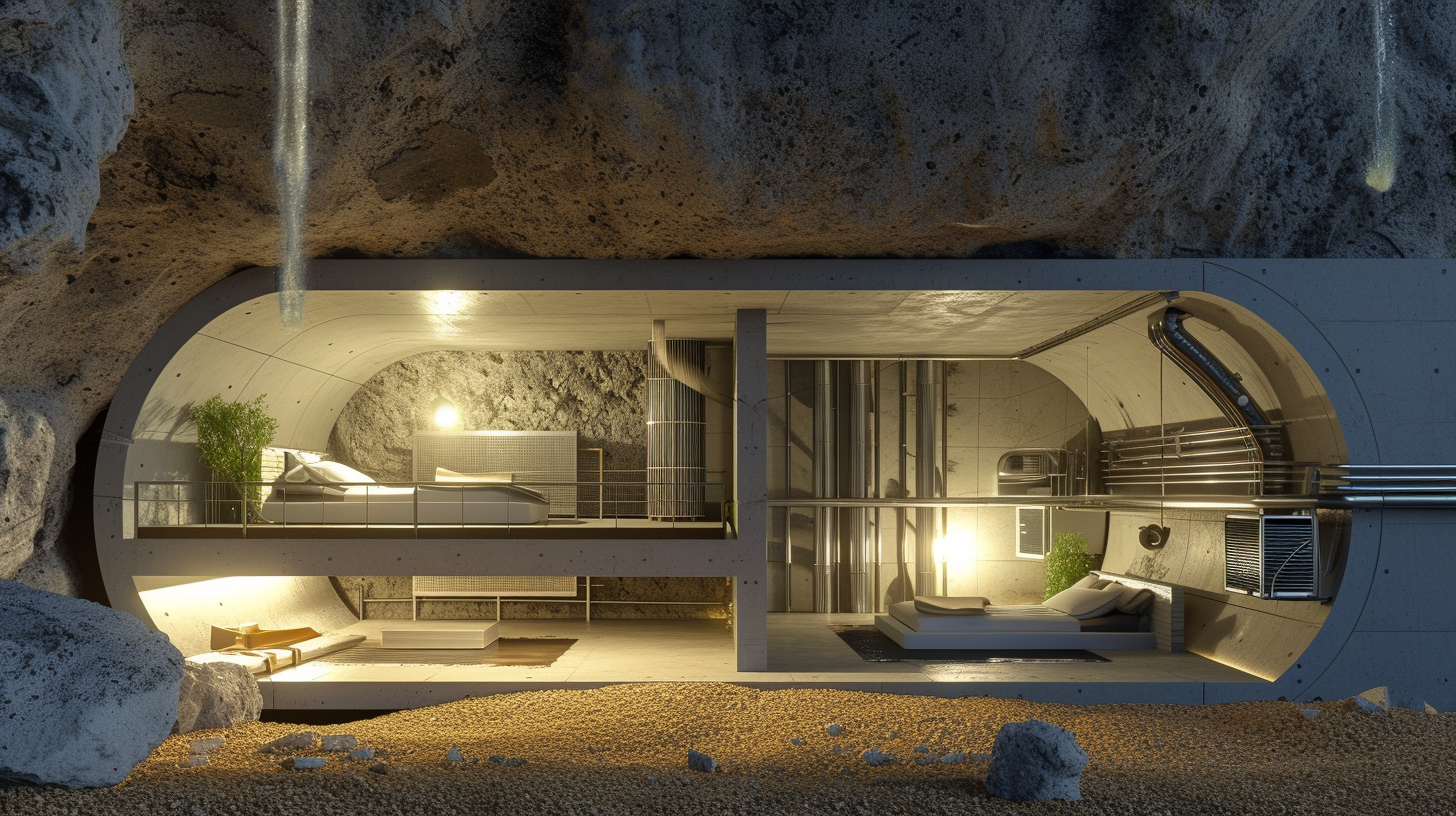In a world marked by growing uncertainties, the concept of a home bunker is gaining traction. Natural disasters, political unrest, or even the rise of pandemics have heightened the need for secure shelters. While these structures were once considered relics of wartime, today, they’re modernized for peace of mind in an unpredictable world. Home bunkers offer a unique blend of security, functionality, and peace, tailored for a variety of potential threats.

What is a Home Bunker?
A home bunker is an underground or fortified structure designed to protect occupants from external hazards. Unlike ordinary basements, bunkers are equipped with features to sustain life for extended periods. These could include air filtration systems, water reserves, reinforced walls, and survival gear storage. The idea is to create an insulated environment that remains unaffected by the dangers outside, whether it’s a natural disaster or a man-made event.
Types of Home Bunkers
Bunkers come in various forms, each catering to specific needs. Understanding these distinctions is crucial for choosing the right type.
1. Fallout Shelters
These are designed primarily to shield inhabitants from radiation following a nuclear event. They’re built with lead-lined walls or thick concrete barriers to block radioactive particles. Air filtration systems, sometimes called HEPA filters, are indispensable here to ensure clean, breathable air.
2. Storm Shelters
Storm bunkers are specifically designed to withstand extreme weather conditions such as hurricanes, tornadoes, and earthquakes. Their reinforced walls, often made of steel or concrete, are built to absorb impact from debris, high winds, and seismic activity.
3. Panic Rooms
Panic rooms, while not traditionally considered bunkers, serve as a fortified sanctuary within the home. They are often hidden, secure rooms designed to protect occupants from immediate threats like home invasions. Panic rooms typically contain communications equipment, weapons, and a minimal stockpile of supplies.
Designing a Home Bunker: Key Considerations
Building a home bunker requires thoughtful planning. It’s not just about digging a hole in the ground; every detail matters for maximizing safety and comfort.
Location
The placement of the bunker is critical. Many opt to build it underground, beneath their homes, as this provides a layer of natural protection. Underground bunkers are less likely to be affected by above-ground disasters such as fires, floods, or storms. For those in flood-prone areas, elevated or above-ground bunkers may be a better option, ensuring protection from rising waters.
Materials
The choice of materials is equally important. Steel and reinforced concrete are the most common materials used in bunker construction due to their durability and resistance to damage. These materials can endure high impact and keep external hazards at bay, whether they be projectiles in a tornado or shockwaves from an explosion.
Ventilation Systems
Adequate ventilation is paramount in a home bunker. Without proper air circulation, the confined space can quickly become uninhabitable. Air filtration systems, often equipped with NBC (nuclear, biological, chemical) filters, ensure the air inside remains pure. This filtration is essential if the bunker is sealed for long periods during an emergency.
Essential Features in a Modern Home Bunker
Beyond basic shelter, a modern home bunker is expected to offer a range of features that cater to long-term survival and comfort.
Water and Food Storage
Water is the most vital resource. A home bunker should include a reliable water source or a significant storage capacity. Many bunkers are equipped with large water tanks or systems to harvest and purify rainwater. Non-perishable food items, typically freeze-dried or vacuum-sealed, are another essential. Having at least a month’s worth of food for all inhabitants is a common recommendation.
Power Supply
A bunker must remain functional even when cut off from external power grids. Backup generators, solar panels, or wind turbines can supply electricity in these situations. This ensures that lighting, ventilation, and communication systems remain operational. Backup batteries are also crucial in case the primary power sources fail.
Communication Systems
Staying informed about the outside world during an emergency is essential. Modern bunkers are often outfitted with radios or satellite communication systems to stay connected. Internet access through satellite services is increasingly common in advanced designs, allowing occupants to gather real-time information and communicate with authorities or family members.
Sanitation and Waste Management
Extended stays in a bunker necessitate well-thought-out waste disposal systems. Many bunkers feature composting toilets or self-contained septic systems. These solutions prevent the build-up of harmful bacteria and ensure that the bunker remains livable for prolonged periods.
Costs of Building a Home Bunker
Building a bunker is a significant investment, and the cost can vary widely depending on the design, materials, and features. On average, a basic bunker can range from $30,000 to $60,000, while more advanced models with custom features may exceed $100,000. High-end bunkers, which resemble luxury apartments with all the modern conveniences, can cost upwards of $500,000 or more.
While the price may seem steep, for many, the peace of mind and security that a well-built bunker offers is invaluable. Insurance against the unpredictable, a home bunker is a sanctuary when conventional safety measures fail.
The Future of Home Bunkers
As global challenges evolve, so do the designs of home bunkers. Advanced technologies are being integrated to create self-sufficient habitats. Innovations such as hydroponic gardens for food production, renewable energy systems, and enhanced air purification techniques are shaping the future of these shelters. With rising demand, manufacturers are increasingly focused on making bunkers not just functional but also comfortable living spaces.
In conclusion, home bunkers offer a fortified haven against the unpredictable. Whether it’s shielding against natural calamities or human-made threats, these structures provide a safeguard in an uncertain world. With thoughtful design, the right materials, and proper planning, a bunker can be more than just a shelter—it can be a life-sustaining environment.